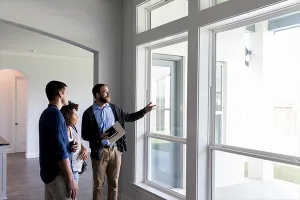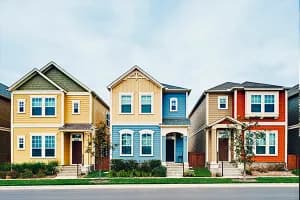
Homeowners take on outdoor projects for many reasons: curb appeal, resale value and the simple pleasure of having beautiful landscaping. Consumers report a “joy score” of 9.7 out of 10 after upgrading their landscaping, according to a 2023 report from the National Association of REALTORS®.
Real estate professionals continue to report that clients are more interested in sustainability. When considering sustainability as a selling point, it’s natural to think of energy-efficient appliances or low-VOC paint. But landscaping can be sustainable as well. With 92% of REALTORS® recommending a curb appeal boost for sellers, why not increase the attractiveness to buyers by making that curb appeal eco-friendly, too?
The Value of Greener Landscaping
Four in 10 Americans say they chose their home location based on access to green spaces, according to the Arbor Day Foundation’s 2024 Canopy Report. Imagine the appeal to potential buyers when there’s a beautiful, low-maintenance green space in a listing’s backyard.
Eco-friendly landscaping helps reduce maintenance and conserve resources. That’s a win for both buyers interested in a beautiful lawn with less work and buyers who care about sustainable living.
Homes with thoughtfully planned sustainable landscaping offer several selling points:
- Almost all landscaping overhauls, sustainable or not, improve curb appeal.
- Sustainable landscaping boosts potential buyers’ perception of the property.
- It also reduces the need for water, lowering water bills.
- And it helps reduce the time spent on yard work, increasing available leisure time.
7 Sustainable Landscaping Ideas
These eco-friendly landscaping ideas can boost curb appeal and homeowner satisfaction. They may also add resale value to homes before they go on the market.
Think ‘drought tolerant’
“A low-maintenance landscape is definitely a selling point for potential buyers,” says Corey Chetcuti, a designer and project director at Freemodel in Sacramento, Calif. “To help conserve water, a drought-tolerant [or] low-water landscape is a must.”
Drought-tolerant landscaping requires less watering and thrives even during long, dry summers. The best drought-tolerant plant choices for homeowners vary by location.
For example, a drought-tolerant landscaping project in California might include agave, sagebrush and bougainvillea. Drought-tolerant lawns in Colorado, however, might feature lavender, silver sage and white fir.
Plant more trees
Homeowners interested in lowering their carbon footprint should consider planting more trees.
According to the Sierra Club, big, mature trees have excellent carbon-capturing capability. That’s a great feature for real estate professionals to point out when showing a house with mature landscaping to sustainability-minded buyers. And in regions with long, hot summers, large trees also keep the outdoor space cool and livable.
Select native plants
The National Wildlife Federation suggests aiming for 70% native plants in any lawn or landscaping overhaul. Native plants, which grow naturally in a specific region, help attract and benefit local birds, butterflies and wildlife. Native plants also tend to be low-maintenance. They don’t need much help to bloom where they’re planted, since they were planted where they naturally bloom.
Consider a “no mow” lawn seed mix
Homeowners who want a grassy lawn can still reduce mowing to once every two to three weeks by planting a “low/slow grow seed mix,” says Susan Cohan, an award-winning professional landscape designer based in New Jersey. The best slow-growing grass seed for each homeowner depends on their location, so it’s a good idea to seek advice from a local garden center. While “no mow” grass does not exist, using a slow-growing grass seed mix can dramatically reduce yard maintenance. It also reduces the gasoline or electricity used to mow the lawn.
Swap out mulch for ground cover
“Don’t over-mulch trees and shrubs,” says Cohan. “Try a ground cover instead.” Ground cover refers to any low plant that grows over a large area. Like mulch, it helps keep the soil moist and reduces the possibility of soil erosion. But unlike mulch, ground cover is very low-maintenance and can often nearly sustain itself. It grows year after year without needing to be replaced.
Plant produce
According to Ashley Irene, the founder of Heirloom Potager, a boutique landscape design firm in Southern California, homeowners committed to sustainable living can take their landscaping to the next level by using compost to grow nutrient-rich vegetables and herbs. Using raised garden beds to create a potager, or small kitchen garden, offers homeowners a delicious reward for their efforts while also reducing the need for mowing.
Opt for local, sustainable materials
“Homeowners can also improve their environmental stewardship by using locally sourced materials for pathways and raised bed construction,” Irene says.
Landscaping often includes walkways, water features, firepits, pergolas and more. Homeowners interested in sustainability should ditch the concrete and build hardscapes made from reclaimed wood, natural stone, sand or products made from recycled materials.









